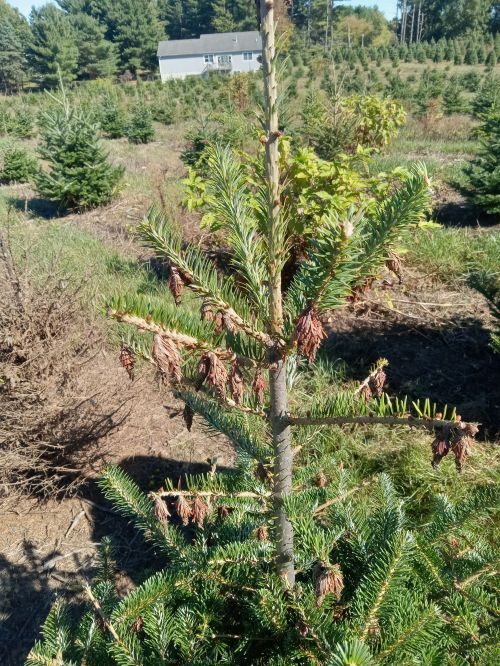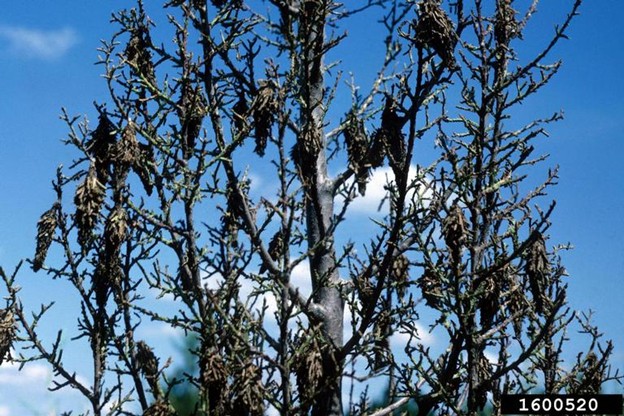Beware of bagworms in Christmas tree fields
Bagworms are an uncommon but significant pest of Christmas trees.

Over the last few weeks, several growers in Michigan have reported finding unusual structures in their Christmas trees. This is caused by Thyridopteryx ephemeraeformis, (Haworth), an unusual moth commonly referred to as bagworm. Bagworms are defoliators and can feed on many trees and shrubs. Severe defoliation can be a serious problem for conifers, including all Christmas tree species. If all or nearly all needles are consumed, conifer trees can even be killed. Bagworms are generally more common and more abundant in the central and southern U.S., but their presence seems to be increasing in Michigan. This likely reflects the changing climate, particularly the warmer, shorter winters. 
Bagworms have a fairly complex life cycle. They overwinter as eggs inside of a large protective case formed from leaves or needles mixed with silk and frass, as seen in the lead photo. Each case can contain 500 to 1,000 eggs. Eggs hatch in spring, and young caterpillars emerge from the case to begin feeding on foliage. This typically occurs around late May to mid-June in Michigan (600-900 GDD 50F). Young caterpillars create small silken structures that offer protection and help them disperse through the air from one tree to another. As larvae continue feeding over the next 8 to 10 weeks, the case formed by each larva will also get larger.
Eventually, mature caterpillars will attach their large silken case to the tree, hang head down, and pupate. Male bagworms will develop wings and emerge from their case in about 4 weeks. In contrast, the adult female remains wingless and never leaves her case. She does, however, produce a sex pheromone that volatizes into the air. A male moth will track the pheromone to locate a female, then mate with her through a hole at the base of the case. The female then lays her eggs inside the large case and dies. The eggs overwinter until the following spring and the life cycle begins again.
Treatment options
MSU Extension recommends growers scout their Christmas tree fields for bagworm cases, especially during winter when there can be hundreds of overwintering eggs inside. Prune off and burn or otherwise destroy the bags. This should substantially reduce bagworm population levels next year. If trees have been severely defoliated, it may be most efficient to simply cull and burn the affected tree(s). Be sure to scout trees for evidence of bagworms throughout the growing season too, especially in fields that were infested in 2025. Insecticide cover sprays can be applied to control young caterpillars just as they begin feeding. Products with Bt as the active ingredient (ex. Dipel) are the best choice. These products effectively control young caterpillars and will also minimize impacts on beneficial insects such as predators, parasitoids and pollinators.



 Print
Print Email
Email

